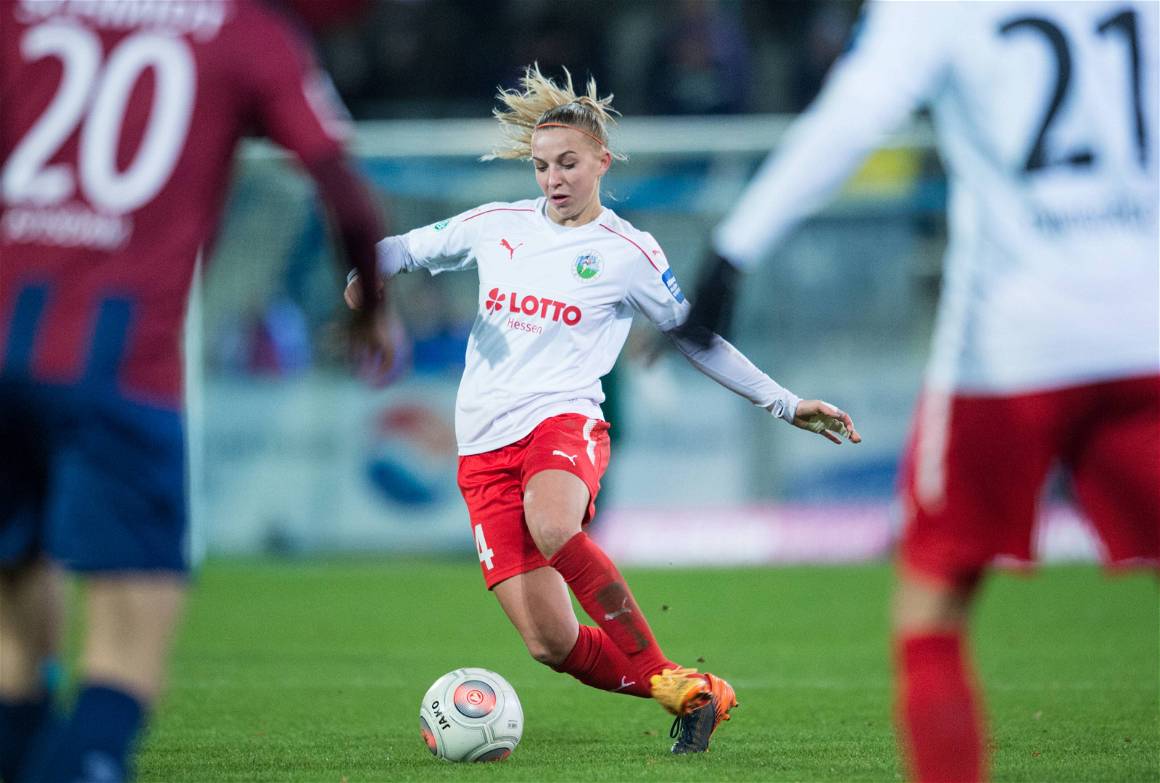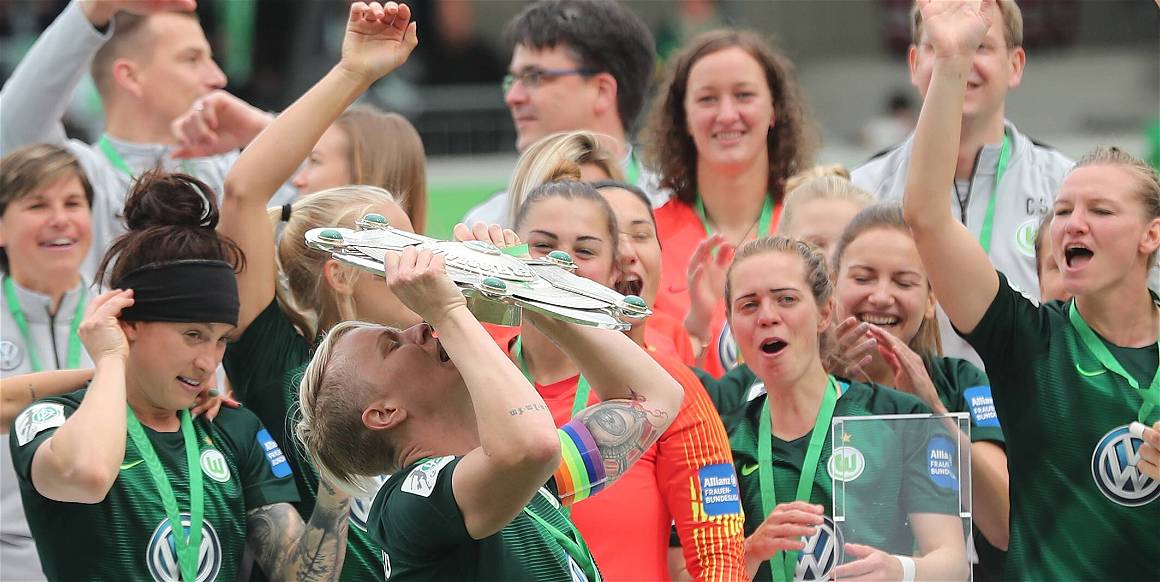Examining the role of sports broadcasting in female football leagues, columnist Sofia Bergmann dissects what effect media support has within sport and its continued impact within gender inequality.
Women’s Bundesliga on the Rise.
While shifting the attention of the crazed fanaticism within men’s football is an uphill battle, more exposure of the Frauen (women’s) Bundesliga in the media could birth a similar culture within a younger generation of football fans, possibly bridging the gender-gap in the long term.
Megan Rapinoe and the U.S. Women’s National team have caused major ripples in their demand for equal pay in their ongoing legal battle with the United States Soccer Federation — but the fight does not end in the United States. As Germany’s main football cup, the DFB Pokal, is currently underway, the attention and visibility of women’s matches continues to take a backseat compared to the men’s teams — but a change of air is underway.
Ever heard of Lena Oberdorf? If the answer is no, there is a good chance that you will in the coming years, as pledges to increase the broadcasting of the Frauen Bundesliga have been making headlines in Germany. Oberdorf, who plays for VfL Wolfsburg, one of Germany’s strongest teams, is the highest valued player in the league. IMAGO and its female photographers like Annegret Hilse and Susanne Hübner, have been documenting the league and Wolfsburg’s success over the years.
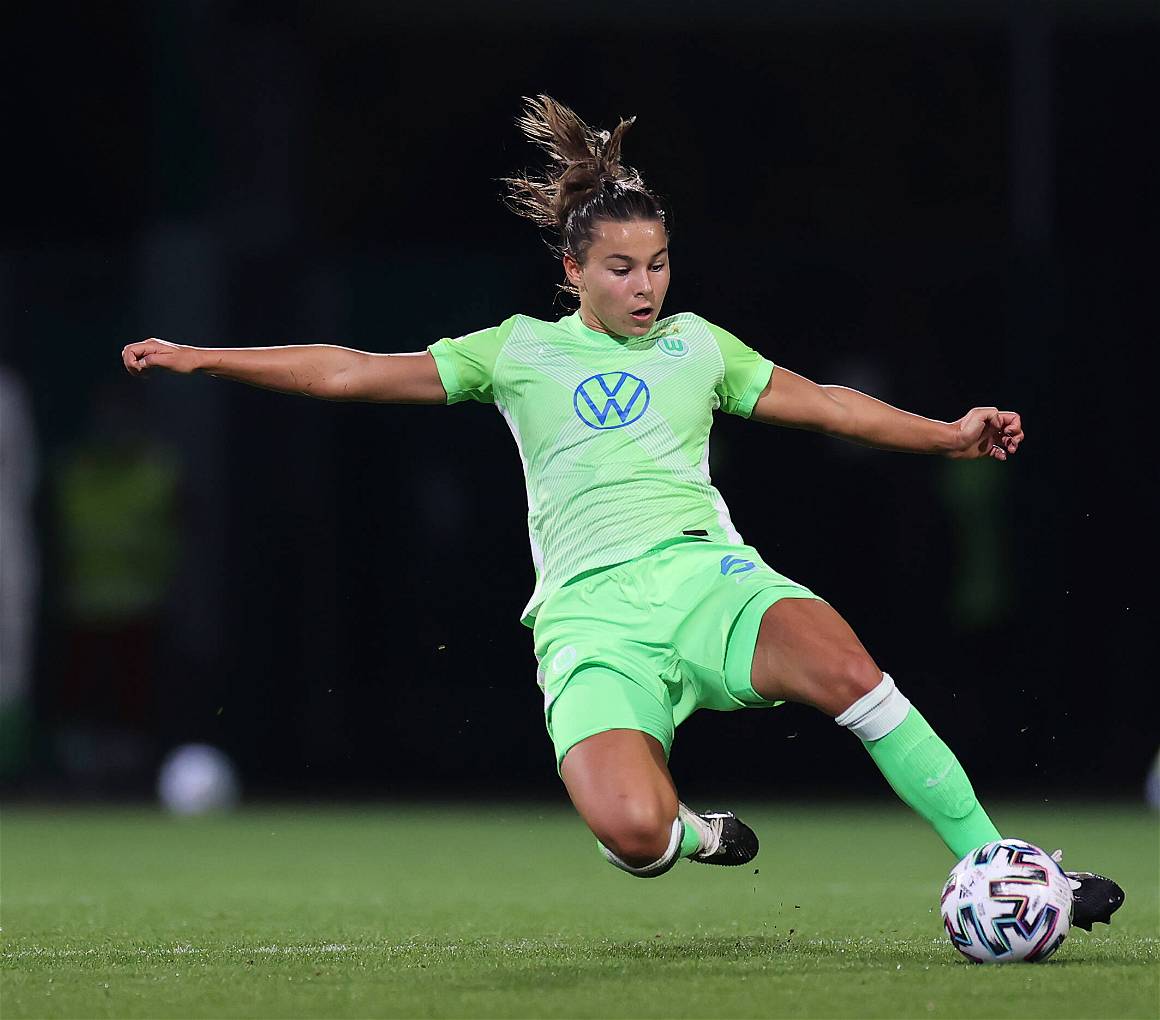
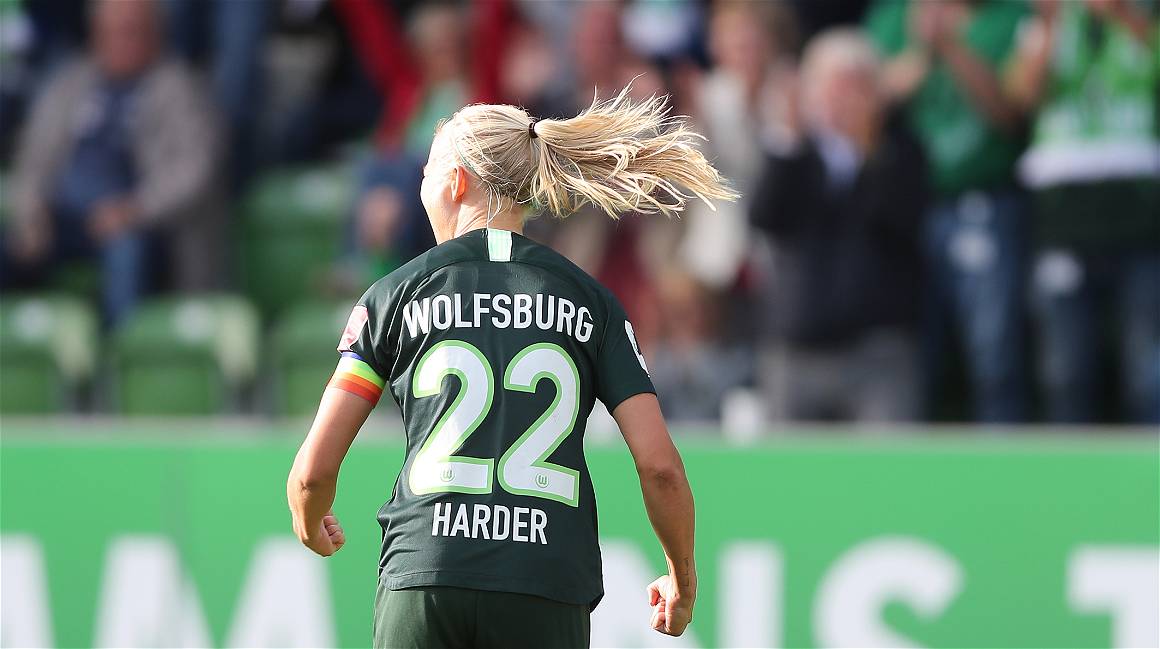
“When I see how small the demand for women’s football photos is, it becomes quite clear how high the importance [of increased visibility] is, and Wolfsburg is even very successful internationally,” said Hübner in an interview with IMAGO. In short, the team has won the DFB Pokal seven years in a row and has taken home two Champions League titles. According to Transfermarkt.de — one of the largest sports information portals in Germany which only recently started to show female stats — after Obderdorf who is valued at €250K, Dominique Janssen is ranked second and valued at €200K, Alexandra Popp fourth at €175K, Svenja Huth sixth at €150K; all Wolfsburg players. The women’s FC Bayern Munich players join Wolfsburg in the top ranks along with Eintracht Frankfurt and TSG Hoffenheim.
To put things into perspective, star player Pernille Harder was traded out of Wolfsburg over to FC Chelsea in September 2020 for around €300K, while Christiano Ronaldo is being traded to Manchester United for around €20 million. Male players in the second divisions are still traded at higher rates than women. Ever heard of Marvin Ducksch of Hannover 96? He was recently traded for €2.5 million euro.
Oberdorf and her teammates are lucky that their team is based in Wolfsburg, a city essentially built for and around the headquarters of Volkswagen which generously funds its Football teams. It is a perfect example of why funding and attention leads to the success of a team. “The location of Wolfsburg is only so professional thanks to Volkswagen. Other Bundesliga teams look enviously at the great infrastructure in Wolfsburg,” adds Hübner. Even with the support of giants like Volkswagen though, the differences between men and women are immense.
But the money for women’s football doesn’t grow on trees — if the gender pay gap is to be erased, funding and media coverage needs to increase tremendously. The questions of lack of funding and media coverage are contingent upon each other, since more media coverage affords more funding, more funding means better teams and infrastructure, more presence and therefore higher overall pay. It seems like simple math, but the process has many moving parts and is ongoing.
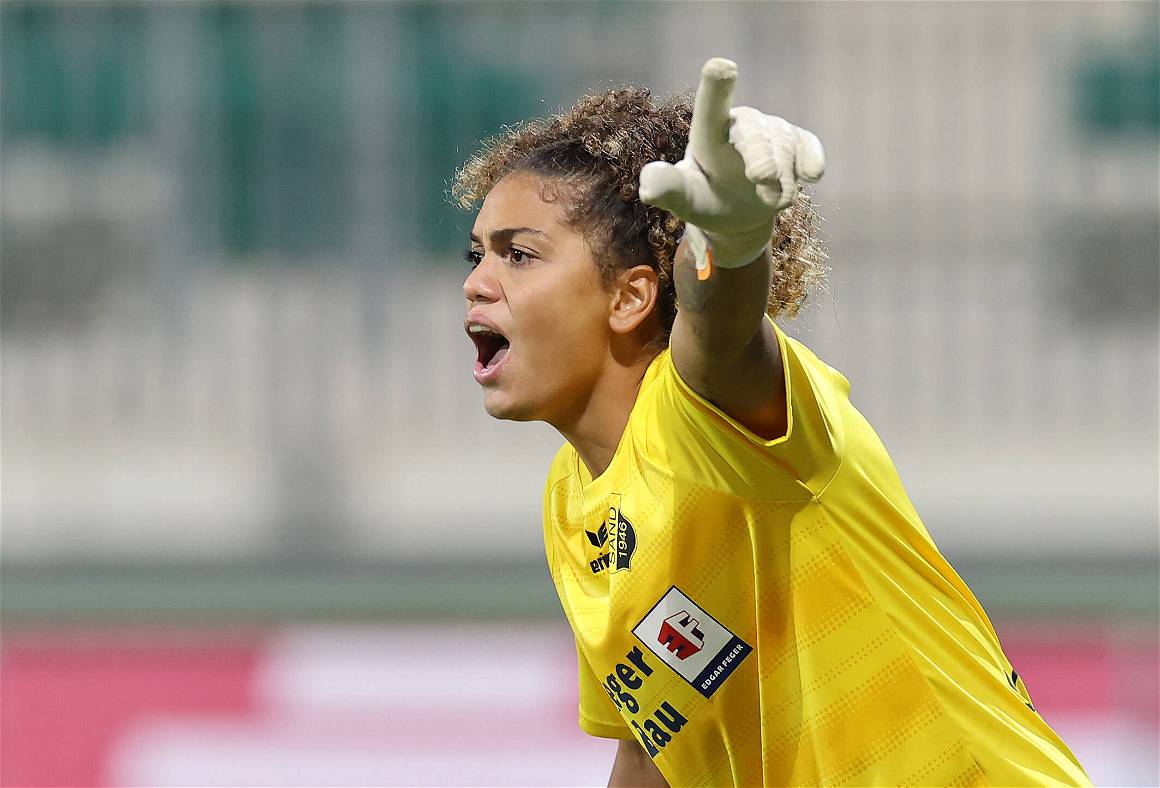
“There is a lack of sponsors in women’s football, and the number of photographers at the matches is quite small. It is significantly higher at men’s matches,” says Hübner, who has also photographed the men’s league. Wolfsburg’s manager Tim Schumacher has also expressed that the revenue from TV marketing is a major factor in the fight for equal pay, but steps are being taken to emerge from the dark-ages.
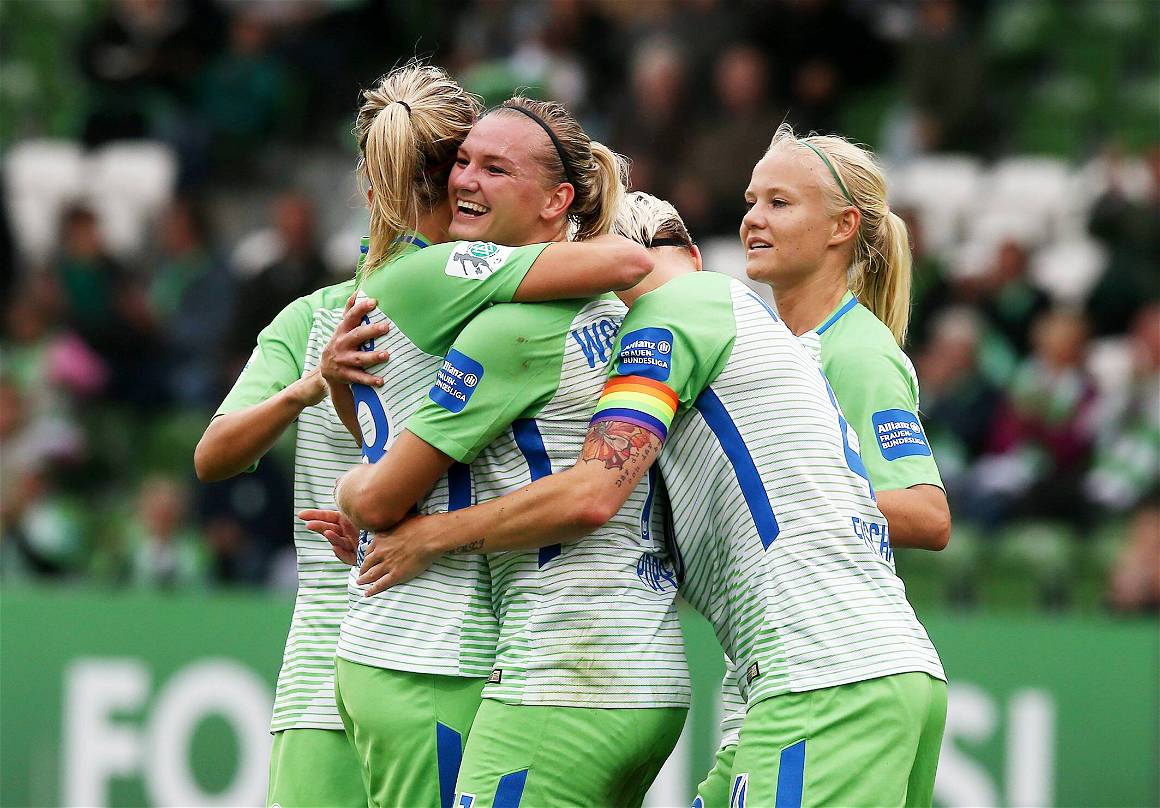
Along with changing their Twitter background to a mission-statement ‘together in support of more women and girls in football’, the German Football Association (DFB) has issued a press release stating that it will invest “massively in the visibility of the women’s Bundesliga.” It will be sharing the costs of increased airtime with Telekom, one of Europe’s largest telecommunications providers based in Germany.
The deal allows for a full production of 132 games each for the 2021/22 and 2022/23 seasons, and will be shown on the paid platform MagentaSport (sponsored by Telekom). Previously, Friday evenings were reserved for the Frauen Bundesliga airtime which will now be increased to also airing at least one match on Saturday and the rest on Sunday afternoons. Other major German media outlets like Eurosport and ARD also received the rights to air one live match per match-day along with highlights-reportages. ZDF, another one of Germany’s largest networks also recently released a documentary showing the fight for equality in the Frauen Bundesliga. More airtime means more exposure especially to the younger generation of sports fans, more people willing to actually pay for streaming services, along with more advertising and sponsorship revenues in the long term.
England has proved to be a role model for increasing the visibility of women’s football as the English Football Association (FA) recently announced multi-million dollar TV contracts with Sky Sports and BBC, securing parts of the broadcasting rights for the Women’s Super League. It was the first time that rights to the league were sold independently of men’s football.

How does IMAGO play into all of this? Being the largest German agency delivering sports-photography to media outlets, its increase in the number of collections published for women’s Bundesliga feeds into the sports news cycle. Kicker.de for example, Germany’s main sports media outlet and also one of Imago’s clients, has only one tab for women’s football although its coverage of the Frauen Bundesliga and the fight for women’s football has increased. Not only does IMAGO cover the Frauen Bundesliga and international competitions like Champions League and the World Cup, but also the second and third tiers in the Bundesliga, and other major European leagues.
While the demand and therefore coverage is still much higher among men’s sports events, the Picture Desk at IMAGO is also squeezing in more photo collections of training sessions for regional and national women’s teams, press conferences, friendly matches and World Cup qualifying matches. With more photos of female athletes being sold, the demand for photographers rises and the cycle grows. This year alone, around 600 photo collections for matches and events in women’s football have been published and sent to IMAGO’s clients, compared to 2018 which saw close to 400. But aside from the benefits of increased funding through more media presence, Hübner points out that, “The ‘girls’ are always happy when they get to be photographed.”
